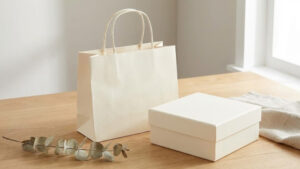Last Updated on October 24, 2025 by Packoi Team
Without realizing it, magazines are a prevalent yet essential part of our lives.
Magazines inform us about various topics, including politics, style, entertainment, and news. By highlighting issues and trends, they help us understand the current state of the world.
Over 73% of respondents prefer reading magazines in quality print to reading on a mobile device. Even though digital technology has advanced significantly, those over 25 still prefer information on paper.
Continue reading for a comprehensive breakdown of the many steps of printing a magazine. We have all the knowledge you need to print your magazines, including choosing the best type of printing paper, essential factors to remember, and how to print a magazine that grabs attention quickly!
Choosing the Best Paper Types for Your Magazine
Many factors, like your marketing goals and budget, will determine the paper types you choose for your magazine. What kind of magazine are you producing, and what are your marketing goals for its publication? These factors will also clear your paper type choice regarding weight, quantity, size, and texture.
Below are some of the best types of magazine printing papers to choose from:
1. Gloss Paper
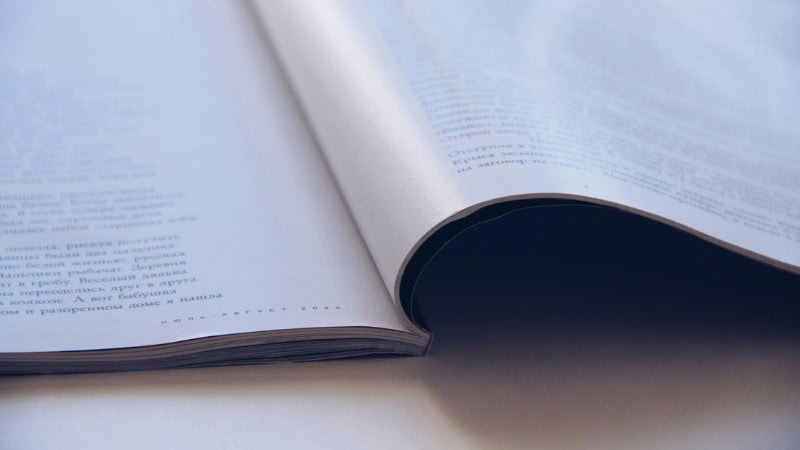
Many magazines use gloss-coated paper for printing because of its glossy sheen and brilliant colors. Photographs and illustrations benefit from its high-quality color reproduction and improved aesthetic appeal. Stylish periodicals, lifestyle journals, and upscale catalogs frequently use this paper type.
Thanks to the material’s velvety smoothness and how it brings images to life, a magazine printed on glossy art paper will have a spectacular visual impact.
Glossy-coated paper is perfect for high-quality photographs and striking promotional materials. The glossy finish brings out colors and sharpens visuals. The unique coating deters ink absorption, guaranteeing vivid and clear images.
Pros
- High-Quality Visuals: Enhances vibrancy and sharpness.
- Professional Appearance: Offers a sleek, polished finish.
- Durability: Resistant to tearing and damage.
- Long-Lasting Colors: Retains color over time.
- Ink Absorption: Produces more precise text and images.
Cons
- Glare Issues: This can cause reading difficulties.
- Fingerprints and Smudges: Shows marks easily.
- Environmental Impact: Harder to recycle.
2. Matte Paper
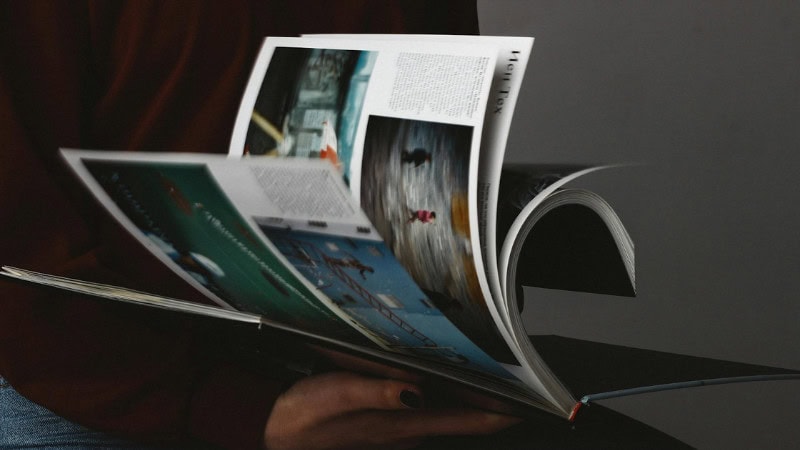
On the other hand, matte art paper gives off an air of subtle elegance in printing magazines. This material is perfect for publications prioritizing a refined aesthetic, thanks to its non-reflective surface that effectively avoids glare.
Publications emphasizing art, literature, or design commonly use matte art paper. The text-heavy content can be made more readable with its softer finish without sacrificing image quality.
Out of all the paper varieties for marketing materials, matte paper is the most muted. In most cases, matte paper is more readable and accessible to the eyes. Printing books and other large-scale reproductions on matte-coated paper is a common practice. Matte paper is not only simpler to write on, but it also makes text stand out more.
Pros
- Reduced Glare: Easier to read under various lighting conditions.
- Cost-Effective: Generally cheaper than glossy paper.
- Eco-Friendly: Easier to recycle and often more environmentally friendly.
- Tactile Feel: Offers a pleasant, non-reflective texture.
- Minimal Smudging: Less prone to showing fingerprints and smudges.
Cons
- Less Vibrant Colors: Images and colors may appear less vivid.
- Perceived Quality: Can seem less luxurious or high-end.
- Durability: More susceptible to tearing and damage.
- Ink Absorption: Higher absorption can lead to duller images.
3. Uncoated Paper
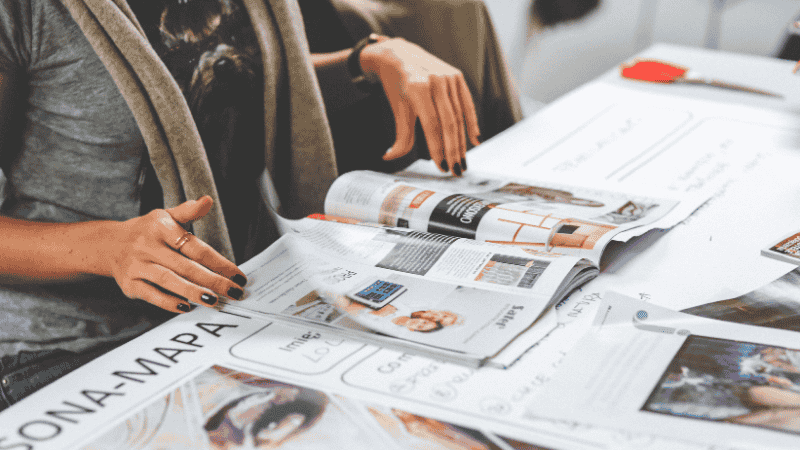
Any paper that does not contain a coating in the interlayer spaces is called uncoated paper. Images printed on this type of paper will typically have somewhat muted colors due to the paper’s slightly coarser texture and unfilled porous nature. Partial coating persists even on uncoated paper.
Pros
- Natural Feel: Uncoated paper offers a more organic, tactile experience.
- Eco-Friendly: Easier to recycle and often made from recycled materials.
- Cost-Effective: Typically cheaper than coated papers.
- Writeability: Easy to write on with pens and pencils.
- Non-Reflective: Reduces glare, making it easy to read.
Cons
- Perceived Quality: This may not convey a high-end look.
- Maintenance: Shows dirt and wear more readily
- Less Vibrant Colors: Images and colors appear duller.
- Lower Durability: More prone to tearing and damage.
4. Satin Paper
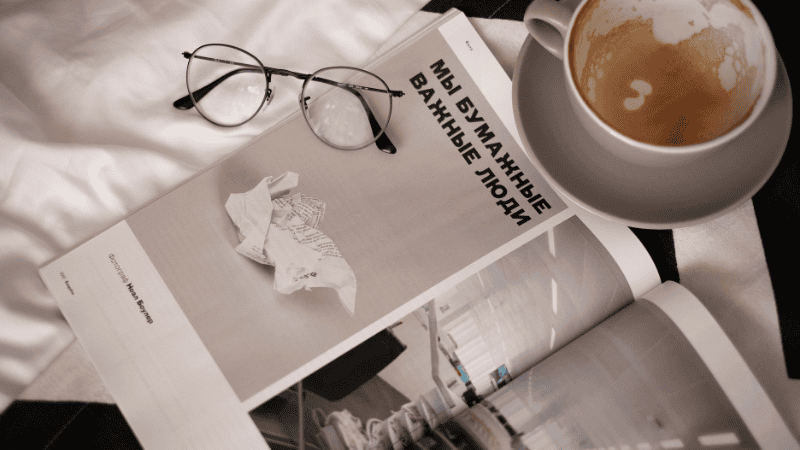
Paper with a satin finish or coated paper is the ideal medium between glossy and matte, allowing for rich hues and minimal reflection. This satin-coated paper is perfect for crisp photos free of distracting glare. Publishers frequently print coffee table books on satin-finished sheets.
Pros
- Balanced Finish: Combines glossy and matte, offering a subtle sheen.
- Vibrant Colors: Enhances image vibrancy without excessive glare.
- Professional Look: Satin-coated paper provides a high-quality, polished appearance.
- Fingerprint Resistance: Less prone to showing fingerprints compared to glossy paper.
- Durability: Fairly resistant to wear and tear.
Cons
- Higher Cost: More expensive than matte and uncoated paper.
- Limited Availability: Less common, which might limit options.
- Environmental Impact: It is harder to recycle due to the coating.
- Glare: It can still cause glare, though less than glossy paper.
5. Biodegradable Paper
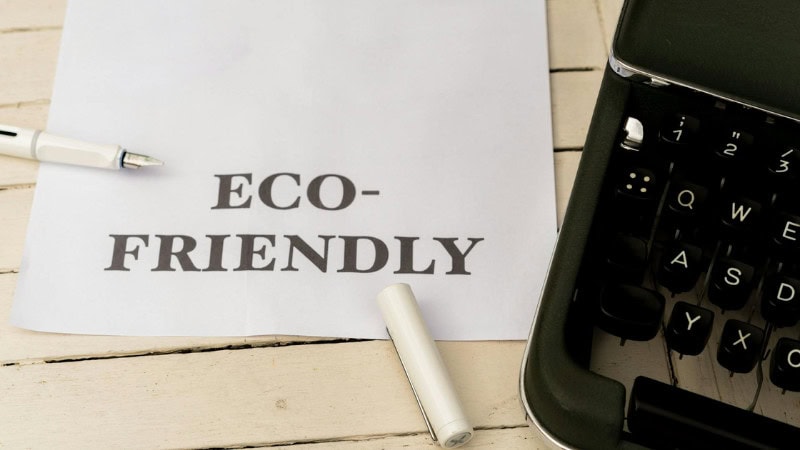
If you care about the health and sustainability of our environment, recycled paper is an excellent option. The composition ranges from 60% to 100% recycled paper pulp, created by blending old paper with water until it decomposes. New paper materials are made by bonding the individual fibers together.
To keep the regenerative cycle going, new fibers sourced from sustainably managed forests are needed as recycled paper fibers deteriorate after a while. Thus, there are cases where using virgin paper is the more environmentally friendly option.
Pros
- Eco-Friendly: Breaks down naturally, reducing environmental impact.
- Sustainable: Often made from renewable resources.
- Positive Image: Enhances the publisher’s reputation for environmental responsibility.
- Recyclable: This can often be recycled, adding to its sustainability.
- Innovative Appeal: Attracts eco-conscious readers.
Cons
- Higher Cost: Generally more expensive than standard papers.
- Availability: Less readily available, limiting options.
Choosing the Right Magazine Paper – Important Factors

Below are some essential factors to consider when you are choosing magazine paper:
1. Paper Finish
The way the paper looks and feels on the surface is called its finish. As mentioned above, various finishes exist, from glossy to matte, each with its own pros and cons.
Before choosing a finish for magazine printing paper, consider the magazine’s design and tone. Glossy art paper is perfect for those who want their designs to stand out. Choose matte art paper if you’re going for a classier, more sophisticated look.
2. Paper Size
You can get magazines in sizes ranging from those of a little paperback book to those of a major newspaper. Standard sizes are usually the most cost-effective, while other custom sizes are still an option.
The optimal way of binding your magazine will depend on its page count. Imagine a regular office printout folded in half or doubled when considering the paper size. Printers have set up standard printing sizes to get the most out of their paper rolls.
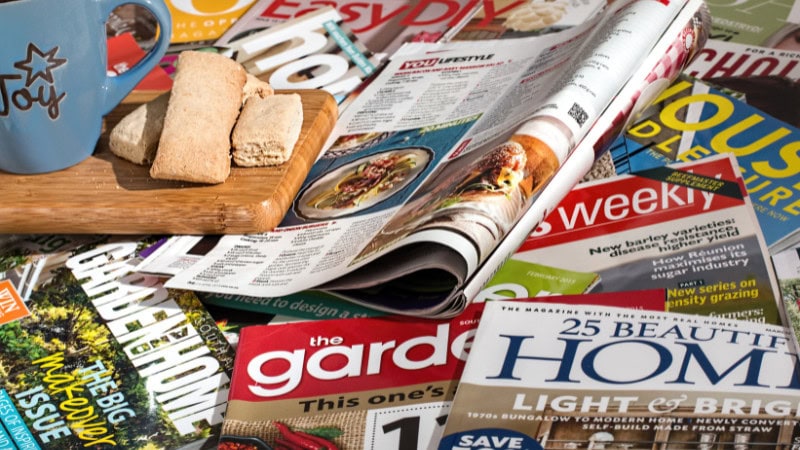
Big magazines are a great option to hand out free copies of your magazine at places like coffee shops and bookstores. For direct distribution or mailing, smaller publications are ideal.
3. Paper Weight
Another crucial consideration is the magazine paper’s weight. It dictates the thickness and durability of the paper. Magazines with a greater page count benefit from lighter paper weight since they are more flexible.
One common option for the inside pages of a typical magazine is 100# gloss text (150 GSM). Covers are typically made of thicker paper, ranging from 80 to 100# gloss cover (218 to 270 GSM) to provide longevity and a high-quality finish.
Magazines with fewer pages or cover pages that need extra durability can benefit from heavier-weight papers, which offer a more robust feel. Thinner paper can be used in a counter situation. When deciding on a paperweight for your magazine, keep its intended use and expected lifespan in mind.
4. Your Budget
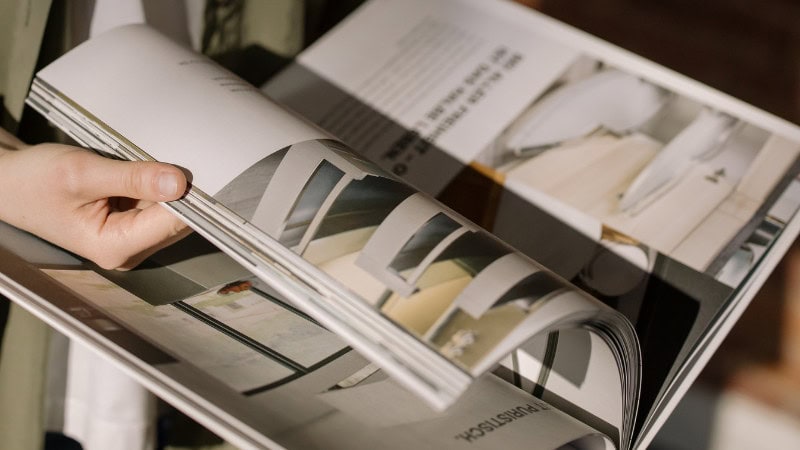
A magazine’s budget is typically a major consideration. Dealing with magazine printing paper requires striking a balance between cost and quality. Prices for different varieties and weights can vary greatly.
Decide on how much money you can spend on magazine publishing, taking magazine paper for printing costs into account. Higher-quality papers could be more costly but also last longer and look better. Choose your paper quality with your intended readers and the value you wish to convey in mind.
5. Page Count
Another factor to consider when selecting the paper type is the amount of magazine paper for the printer. Magazines with more pages may need lighter-weight papers to maintain an acceptable overall weight.
However, choose higher-weight papers for publications with fewer pages for a more opulent feel. While deciding on a paper for your magazine, keep its thickness and weight in mind.
6. Printing Pigments
Due to the high number of photographs in magazines, most of the pages are full color. The colors used in most commercial magazine printing are Cyan, Magenta, Yellow, and Black, which is what full color indicates. Always keep print in mind when you’re creating layouts for your publication.
Common Magazine Formats
Magazines are available in a wide variety of formats. Among the most common, here are the top four:
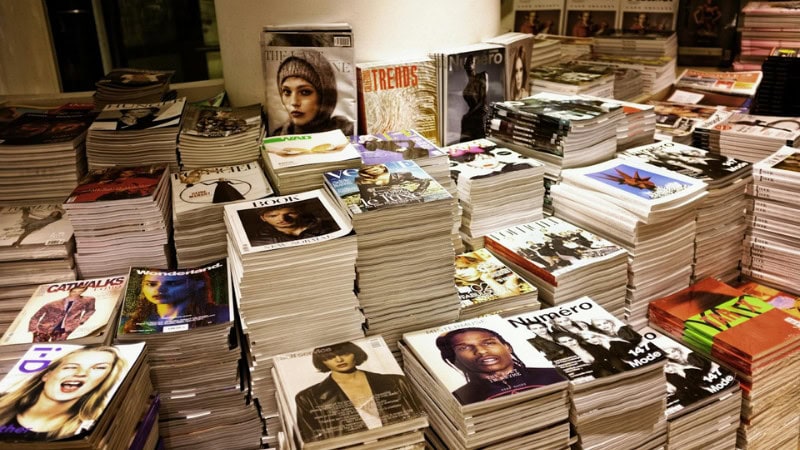
1. Perfect Bound
Perfect-bound books are different from Saddle-Stitched Magazines in that they tie the cover and internal pages together using strong glue instead of staples. Compared to stock books, they are visually distinct and can have up to 448 pages. Because they must cure (dry) before being sent out, Perfect-Bound books add more time to the production process.
2. Saddle Stitch
Saddle-stitched publications can include anywhere from forty-six to seventy-six pages, depending on the paperweight. They are bound securely using staples in the spine. The most economical method of producing a magazine would be to use a saddle-stitched booklet.
3. Spiral Bound
Spiral-bound magazines are among the most uncommon general format kinds. This is because they are more commonly seen in promotional materials for business-to-business and business-to-consumer audiences.
4. Die Cut
You can grab people’s attention and make a lasting impression with die-cut magazines. They are very attractive to the reader and provide a unique magazine style.
How to Print Magazines?
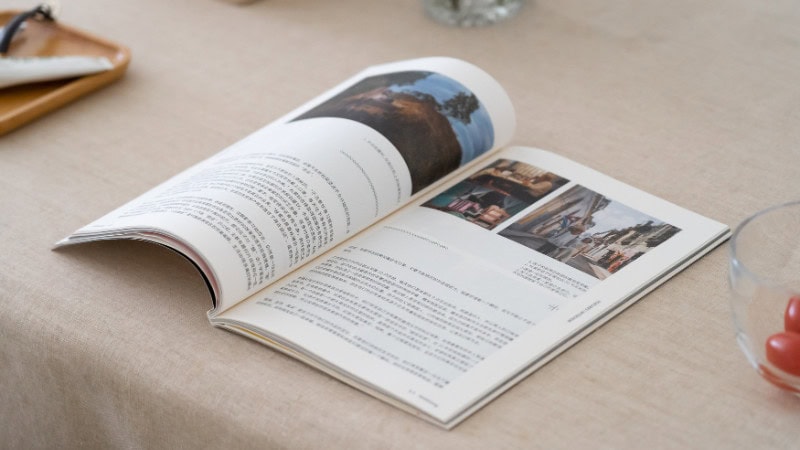
Getting things correctly the first time is essential when you are all set for magazine printing. Preparing for a magazine’s printing is the most critical step. Here is everything you need to follow:
1. Finalize Your Magazine Concepts
Before printing the magazine, you need a good idea of its concept, including the vertical you want to cover and the voice you want to use.
2. Choosing a Reliable Printing Company
Selecting a printer with excellent customer care should be one of your top priorities as you complete your magazine paper for printer requirements. A reliable and experienced printer like Packoi will do one last check for quality and may even suggest ways to save money without sacrificing paper quality.
Choosing the right paper for your magazine printing depends on your expectations for the final product’s text and graphic appearance.
3. Design Customization
Once you have chosen the best printing company for your magazine, discuss design customization with the printing experts. During the customization process of a magazine printer for paper, you can collaborate with Packoi to select the optimal layouts, paper stock, fonts, and graphics.
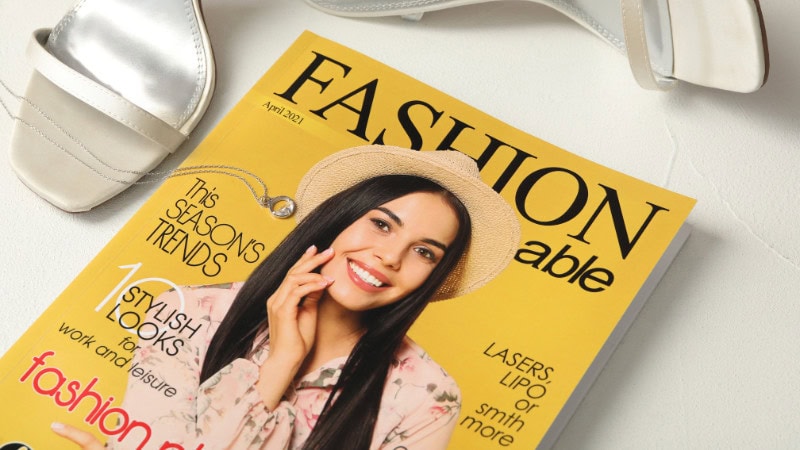
If everything is in order and proofed, you may email the files to have them printed, bound, and shipped.
4. Binding and Finishing
Your magazines require finishing after printing. Preparation for binding follows trimming and cutting to size.
The two most authentic and reliable options for binding print magazines are saddle stitching and perfect binding. Saddle stitching involves stapling the magazine’s spine, while perfect binding works by gluing the spine.
5. Shipping and Distribution
After your magazines are finished, it is time to send them out. The distance between you and the Print House determines the delivery time. Requesting a “partial” from your printer will move things if you have a big order.
Next, consider your publication’s distribution strategy. Because shipping costs can add up quickly, you may consider finding a printing service to deliver your publications to your mailing list. Avoiding the expense of physically delivering magazines to your place of business is a great way to save money.
How to Make Magazines Sustainable?
Much of the negative effects on the environment caused by magazines come from the production side of the industry. To ensure the longevity of your publications, consider the following tips:
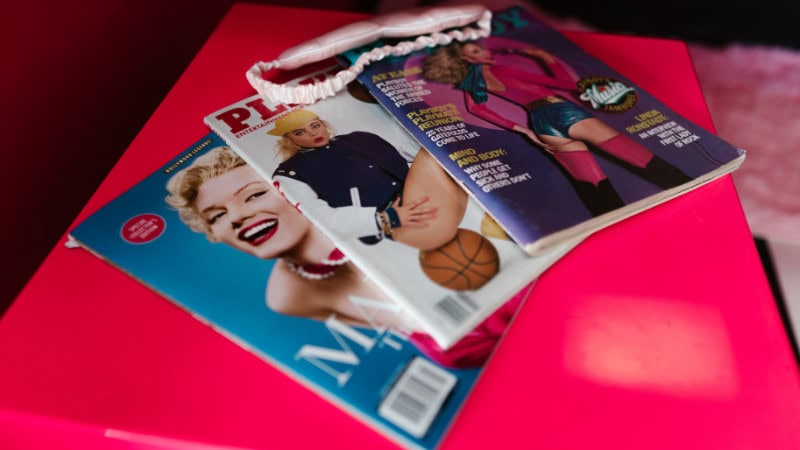
1. Paper Materials
The good news for magazine publishers is that paper, an essential component of print publications, is both renewable and recyclable. Responsibly managed forests and paper mills are necessary to manufacture a more environmentally friendly product.
Naturally, there are recycled grades to choose from, and there have been some exciting innovations in hefty but light papers that provide a pleasantly “fat” magazine with less material—if that’s what your publication needs.
2. Packaging Materials
Plastic film has long been used to wrap or bag magazines. But these days, you can choose from several different options. Paper belly bands have recently become more common for supplement and magazine packaging, whereas newsstand bags made of polythene have replaced polypropylene.
Organic bio-plastic, made from sugar cane, is another option; it functions similarly to regular polythene.
3. Printing Process
Verify that your print companies adhere to environmental best practices for magazine printing. The use of water responsibly and vegetable inks are two possible subjects for inquiry. Manufacturing waste can also be recycled or used if collected efficiently.
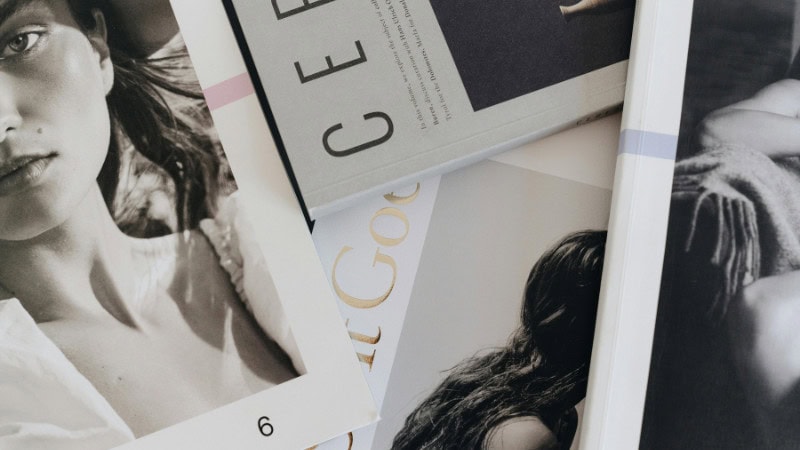
It is encouraging to see printing companies that can reduce their energy use through renewable energy sources, innovative insulation, natural light, and light sensors. Visiting can usually provide enlightening information.
4. Transportation
Transportation is probably another major contributor to emissions in your supply chain. Maintaining print locations close to mailing or finishing houses makes sense because it also costs money and takes up precious time in the schedule.
FAQs
Q1: What is the best paper for high-quality magazine photos?
Glossy paper is best for vibrant, sharp images that stand out.
Q2: Can matte paper work well for text-heavy magazines?
Yes, matte paper reduces glare and improves readability for text.
Q3: What binding method is most cost-effective for magazines?
Saddle stitching is the most economical binding option.
Q4: What factors should I consider before choosing magazine paper?
Key factors include finish, weight, budget, durability, and overall design goals.
Q5: How can I make my magazine printing more sustainable?
Use recycled paper, vegetable-based inks, and eco-friendly packaging.
Conclusion
Choosing the correct magazine printing paper should be one of your top priorities when you have limited time to do it before you begin your next campaign.
If you want your finished product to make an impression on your clients that lasts, choose the right paper type, paper quality, format, and printing process.
Choose the Right Paper for Your Magazine with Packoi Today!
To help you make your print, we’ve compiled a helpful print guide by magazine printing experts at Packoi. Contact us now to get your perfect magazine!



